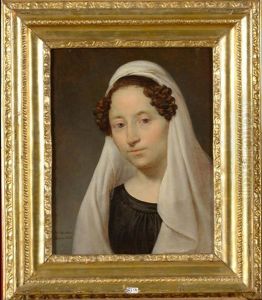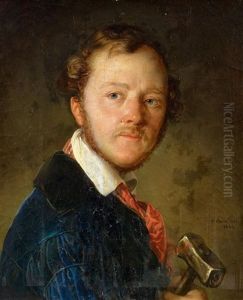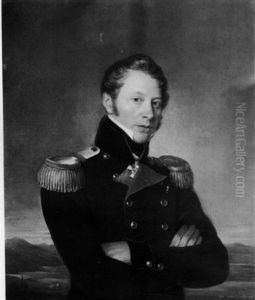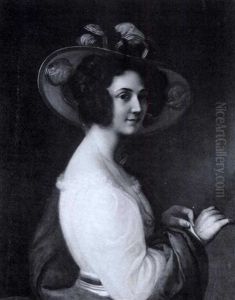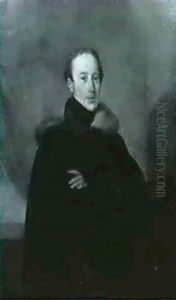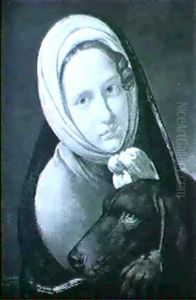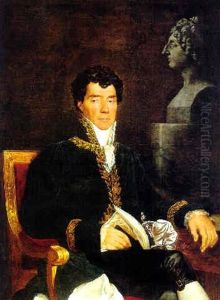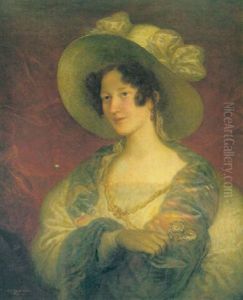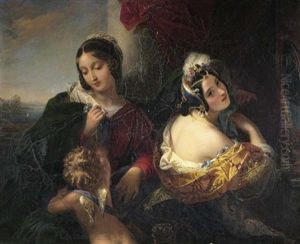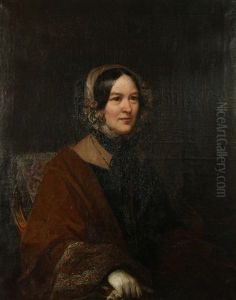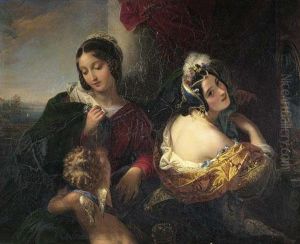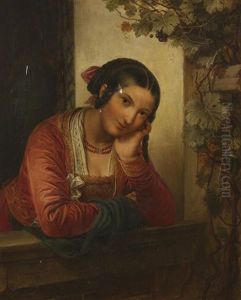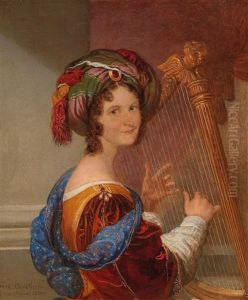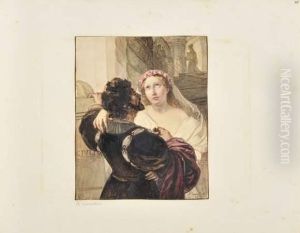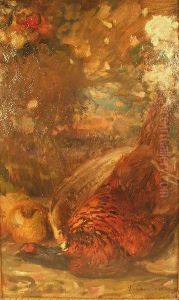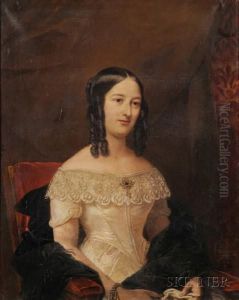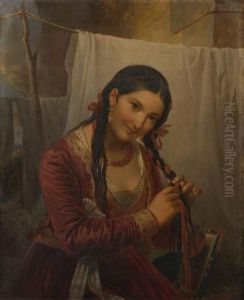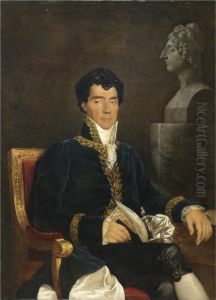Ferdinando Cavalleri Paintings
Ferdinando Cavalleri was an Italian engraver and painter, born in 1794 in Genoa, Italy. He is particularly noted for his refined technique in engraving, which positioned him as a prominent figure in the Italian art scene of the 19th century. Cavalleri's work is characterized by its meticulous detail, clarity, and adherence to the aesthetic standards of his time, blending elements of the neoclassical style with the emerging romantic sensibilities of the early 1800s.
Cavalleri trained in the art of engraving in Milan, under the tutelage of Giuseppe Longhi, a renowned engraver of the period. This education laid the foundation for Cavalleri's technical prowess and artistic sensibility, which were further developed through his studies and work in Rome. His career took a significant turn when he was commissioned to produce engravings for the 'Vasi, candelabri, cippi, sarcofagi' (Vases, candlesticks, cippi, sarcophagi) series, which showcased the classical antiquities collections of the Vatican and other Italian collections. These works were highly celebrated for their accuracy and beauty, earning Cavalleri considerable acclaim.
Throughout his career, Cavalleri's contributions to the arts were not limited to engraving. He also engaged in painting, though his works in this medium are less well-documented and studied than his engravings. Cavalleri's engravings, however, have been instrumental in the dissemination of classical and contemporary art to a broader audience, serving both as educational tools and as artworks in their own right.
Cavalleri's artistic legacy is marked by his dedication to the craft of engraving, his contribution to the preservation and dissemination of classical art, and his influence on the Italian engraving tradition. His works remain of interest to collectors, scholars, and enthusiasts of 19th-century art. Ferdinando Cavalleri passed away in 1865, leaving behind a body of work that continues to be appreciated for its technical excellence and artistic beauty.
